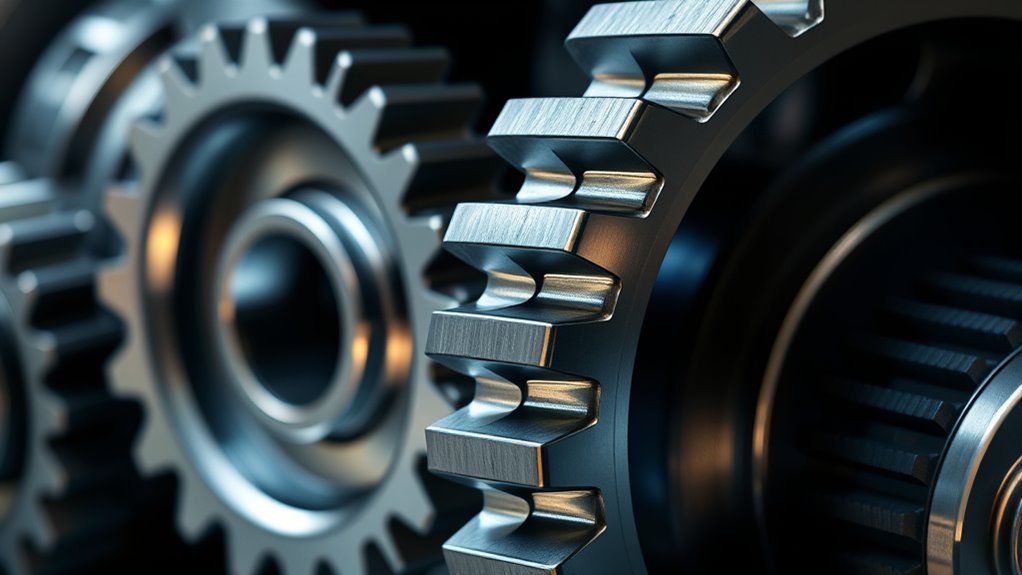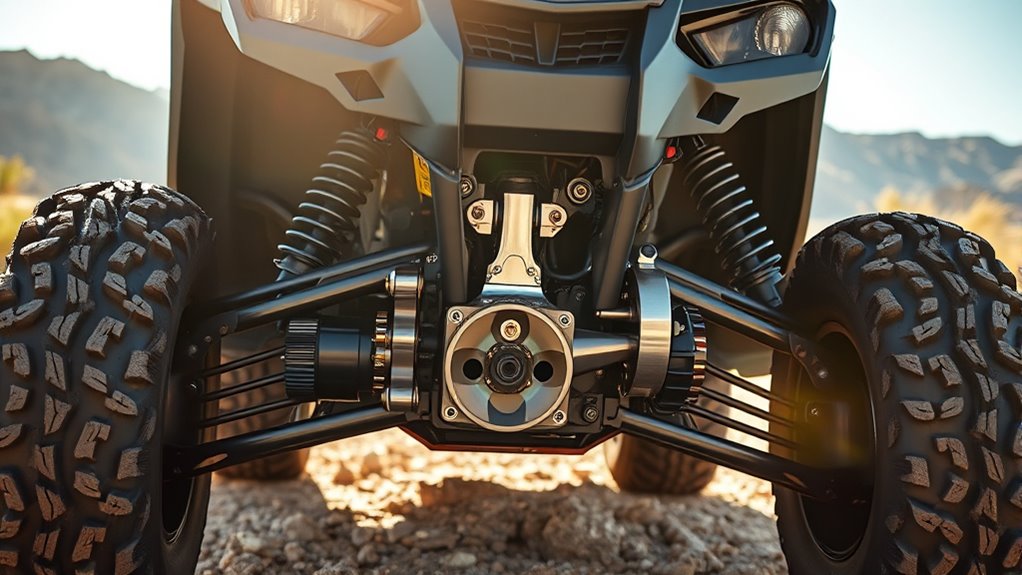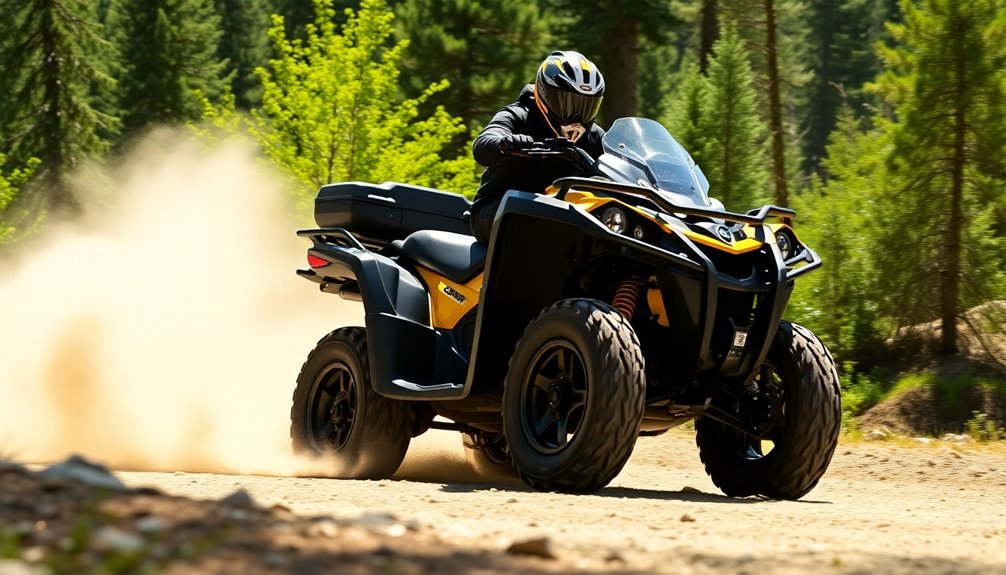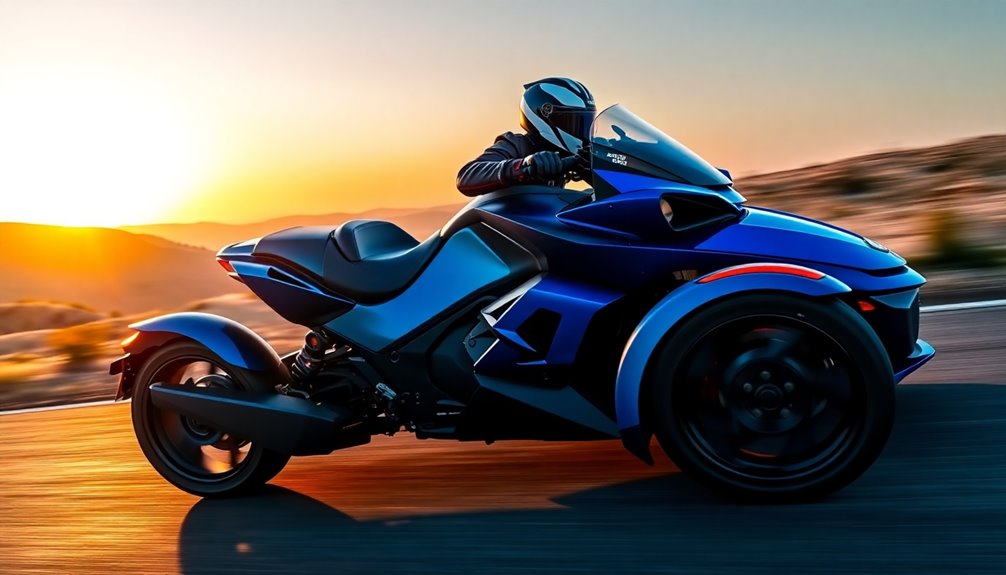To optimize your Can-Am’s gear reduction, focus on balancing torque and speed for your riding style and terrain. Adjusting gear ratios can boost pulling power or top speed, while fine-tuning the clutch engagement guarantees smooth power transfer. Upgrading clutch components and testing different setups help you find the perfect balance for climbing, pulling, and efficiency. Keep experimenting with these strategies to maximize your vehicle’s performance—you’ll discover more ways to enhance your rides.
Key Takeaways
- Adjust gear reduction to match terrain, balancing torque for steep climbs or top speed on flat surfaces.
- Fine-tune clutch engagement points to ensure smooth power transfer and prevent jerky starts.
- Select gear ratios that optimize pulling power or speed, depending on riding conditions and terrain.
- Upgrade clutch components to improve clutch response and enhance overall gear reduction effectiveness.
- Regularly test and modify gear reduction settings to achieve the best vehicle response and control for specific rides.

When optimizing your Can-Am vehicle’s performance, gear reduction plays a vital role in balancing power and efficiency. It allows you to fine-tune how your machine responds under various conditions, ensuring you get the most from every ride. One of the key factors in effective gear reduction is understanding how clutch engagement influences overall performance. The clutch acts as the link between your engine and the drivetrain, and its engagement point determines how smoothly power is transmitted to the wheels. Adjusting clutch engagement can help you achieve a more responsive acceleration, especially when climbing hills or maneuvering rough terrain. A clutch that engages too early might cause jerky starts, while a late engagement could lead to sluggish acceleration. Finding the right balance ensures your vehicle responds promptly without sacrificing control.
Optimizing clutch engagement enhances responsiveness and control across various terrains.
In addition to clutch engagement, gear reduction significantly impacts torque optimization. By selecting the appropriate gear ratio, you can increase torque delivery at the wheels, which is crucial for tackling steep inclines, hauling heavy loads, or powering through tough terrain. A lower gear ratio amplifies torque, giving you more pulling power but often at the expense of top speed. Conversely, a higher gear ratio favors speed over torque, suitable for flat, open areas. When you’re adjusting gear reduction, think about your riding style and terrain conditions. If you frequently encounter steep hills or need more pulling power, opting for a gear reduction that boosts torque makes sense. On the other hand, if you’re cruising on trails with less demanding terrain, maintaining a higher gear ratio for speed might be more beneficial.
Implementing gear reduction strategies isn’t just about choosing the right gear ratio; it also involves understanding how your vehicle’s clutch system interacts with these changes. Proper clutch tuning ensures smooth engagement and optimal torque transfer, preventing stalling or excessive wear. Upgrading or fine-tuning your clutch components can enhance how effectively your vehicle adapts to different gear ratios, improving overall performance and longevity. Additionally, clutch engagement can be fine-tuned through various aftermarket components or adjustments, allowing for precise control over power transfer. Remember, the goal is to create a seamless shift between gears that maximizes power delivery while maintaining control and efficiency.
Ultimately, gear reduction is a balancing act. It requires careful consideration of clutch engagement points and the desired torque output to match your specific riding needs. Regularly testing different configurations and paying attention to how your vehicle responds will help you find the ideal setup. Whether you’re seeking better climbing ability, increased pulling power, or higher top speeds, understanding and adjusting your gear reduction strategy ensures you get the most out of your Can-Am machine in every adventure.
Frequently Asked Questions
How Does Gear Reduction Impact Vehicle Top Speed?
Gear reduction decreases your vehicle’s top speed by adjusting the gear ratio through drivetrain modifications. When you implement gear ratio adjustments, the engine’s power is more effectively transferred to the wheels, increasing torque but limiting maximum speed. This strategy benefits acceleration and towing capacity, but if you want to go faster, you’ll need to optimize your gear reduction setup or revert to a higher gear ratio to boost top speed.
What Are the Common Signs of Gear Reduction System Failure?
Ever wonder if your gear reduction system is failing? You might notice unusual noises like grinding or whining, which are clear signs of failure. Slipping gears, difficulty shifting, or a sudden loss of power also indicate issues. Regular gear reduction maintenance helps prevent these problems, but if you spot any of these signs, don’t delay—address them promptly to avoid more costly repairs and keep your vehicle running smoothly.
Can Gear Reduction Improve Fuel Efficiency in Can-Am Vehicles?
Yes, gear reduction can improve fuel efficiency in your Can-Am vehicle. By making clutch adjustments and implementing differential modifications, you reduce engine strain and optimize power transfer. These strategies allow your vehicle to operate more smoothly at lower RPMs, conserving fuel. When you refine gear reduction, you not only enhance performance but also extend your ride’s range, making your off-road adventures more efficient and enjoyable.
Are There Aftermarket Gear Reduction Options Available?
Yes, there are aftermarket options for gear reduction available for your Can-Am. These gear reduction kits can enhance torque and improve overall performance, especially in off-road situations. You can find various aftermarket gear reduction options from reputable brands that are designed to fit your specific model. Installing these kits is a straightforward way to customize your vehicle’s gearing for better power delivery, though it’s wise to verify compatibility and professional installation.
How Does Gear Reduction Affect Torque and Acceleration?
Imagine your machine as a powerful river, where gear ratio acts like a dam controlling flow. When you reduce gear ratio, you channel more power transfer directly to the wheels, boosting torque and acceleration. It’s like opening the dam wider, releasing a surge of energy that pushes you forward faster. So, gear reduction amplifies torque, making quick starts and steep climbs easier, giving you that adrenaline rush every time you hit the throttle.
Conclusion
Now, picture yourself shifting smoothly through Can-Am’s gear reduction strategies, like a skilled driver steering a winding trail. Each gear change is a breath of fresh air, giving you more control and power just when you need it most. With these strategies, you’re not just riding—you’re mastering the terrain, feeling the engine’s quiet strength hum beneath you. Embrace the ride, and let these gear reductions turn every journey into a thrilling adventure.








